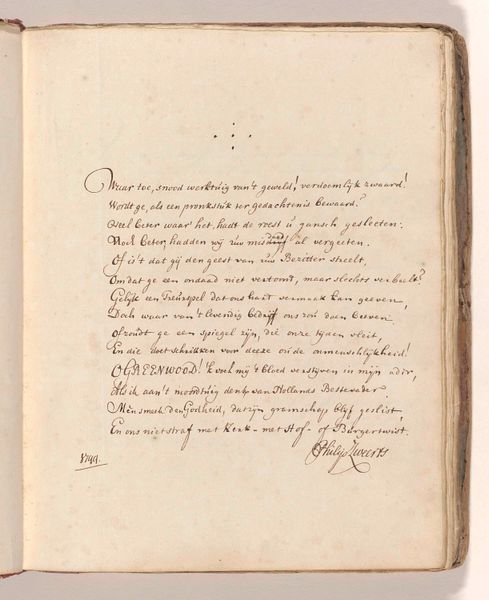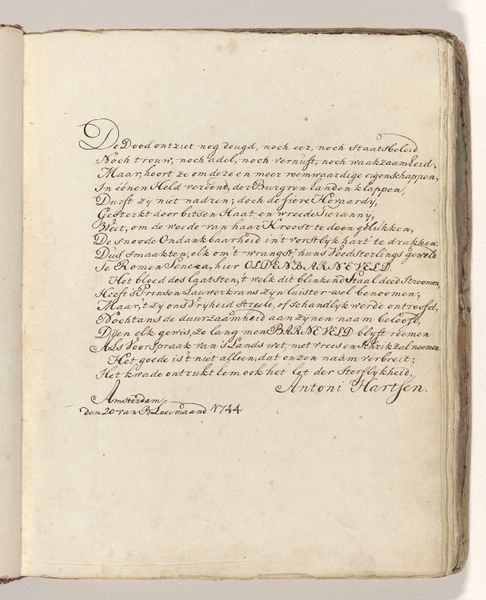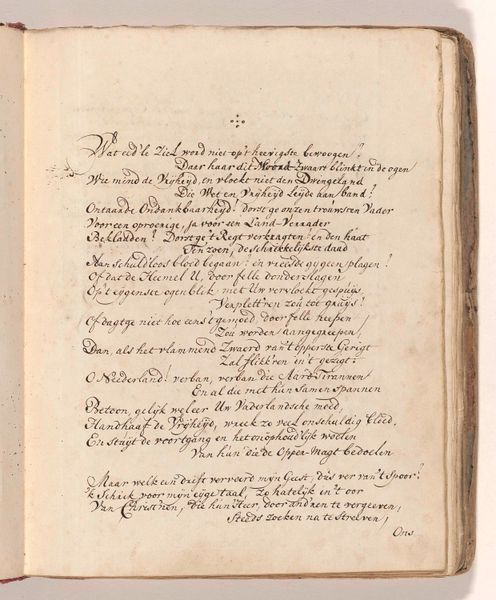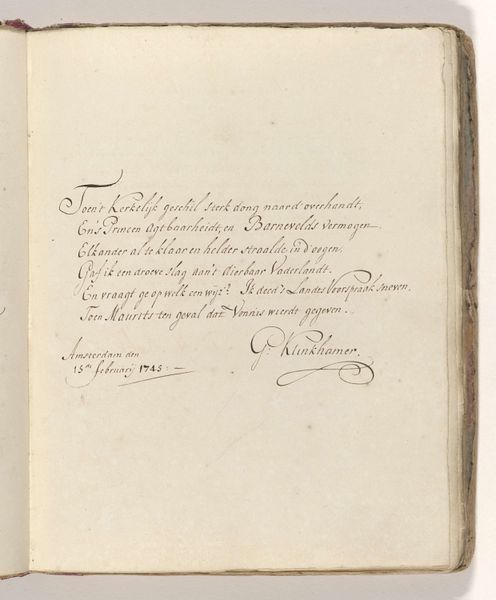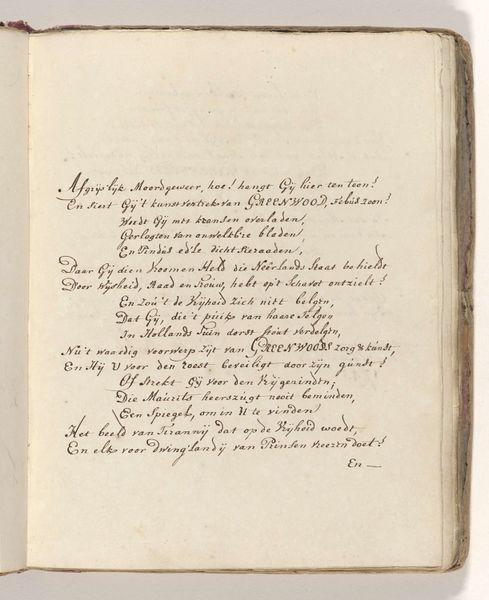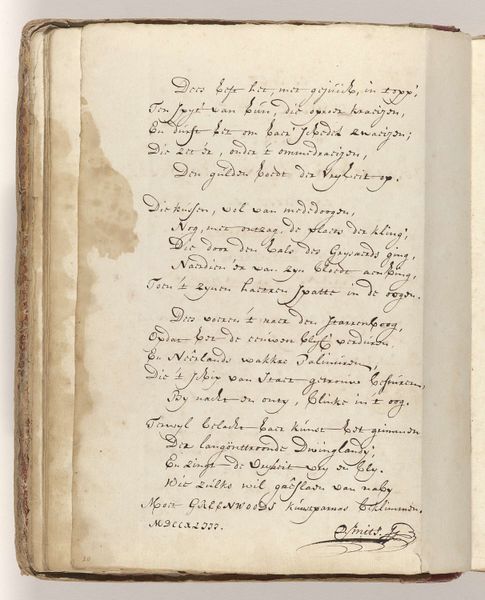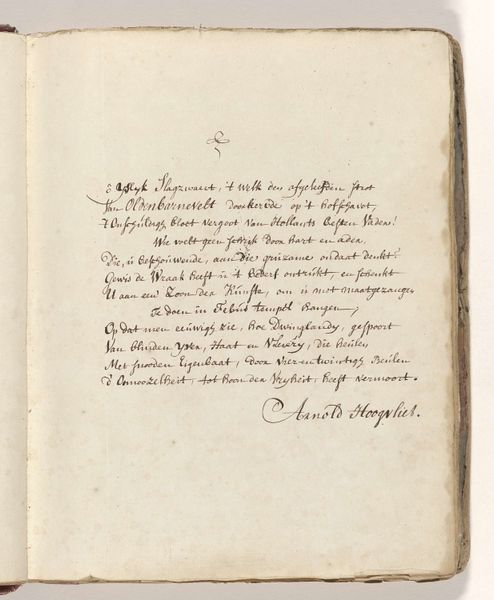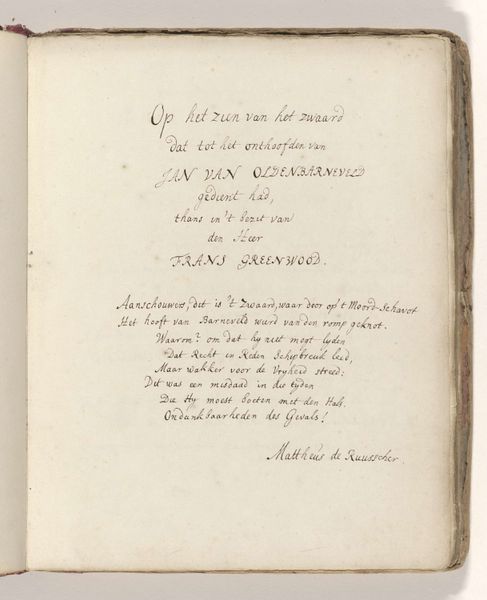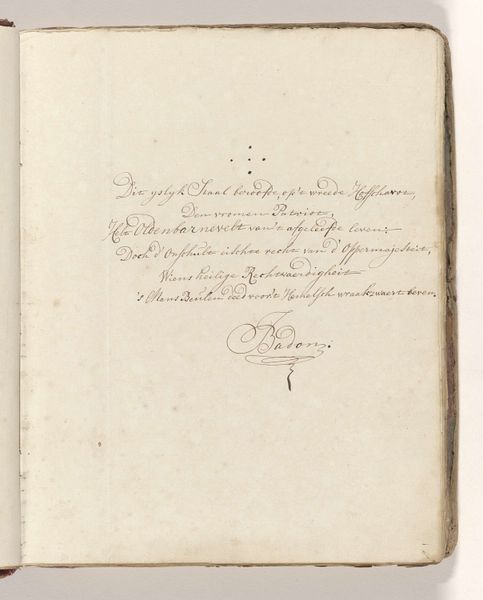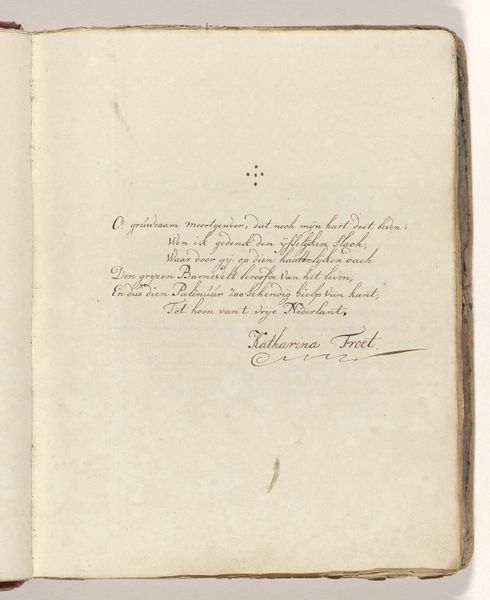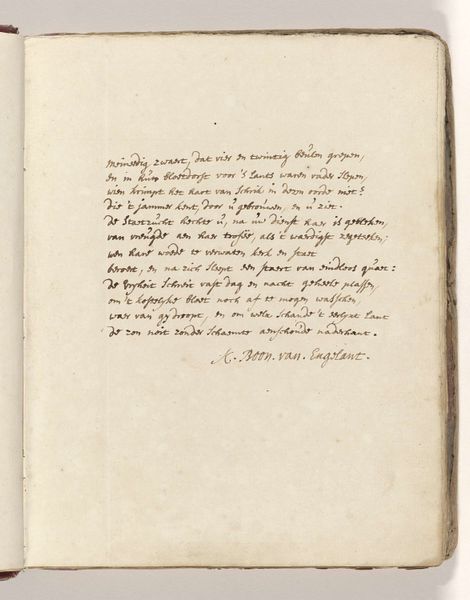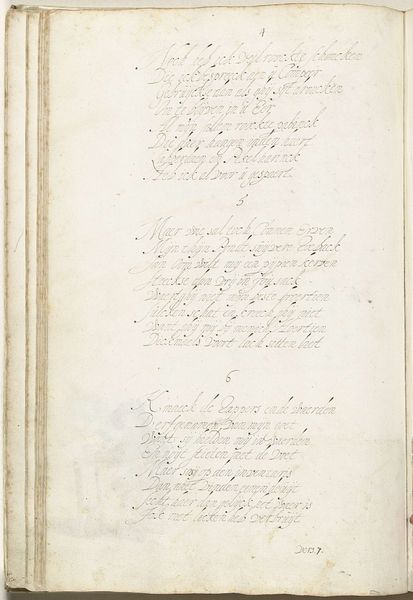
Gedicht op het zwaard waarmee Johan van Oldenbarnevelt in 1619 zou zijn onthoofd Possibly 1745
0:00
0:00
drawing, textile, paper, ink
#
portrait
#
drawing
#
neoclassicism
#
ink paper printed
#
textile
#
paper
#
ink
#
watercolour illustration
#
history-painting
#
watercolor
#
calligraphy
Dimensions: height 275 mm, width 220 mm
Copyright: Rijks Museum: Open Domain
This poem, written in 1745 in Amsterdam by Pieter Huizinga Bakker, commemorates the sword used in the 1619 execution of Johan van Oldenbarnevelt. The poem’s elaborate script and carefully chosen words reflect the complex political and cultural climate of the Dutch Republic. Oldenbarnevelt, a key figure in the Dutch struggle for independence from Spain, was executed for treason, a controversial event that exposed deep divisions within Dutch society. Bakker's poem uses the image of the sword to explore themes of justice, memory, and the fragility of the state. By referencing classical figures like Mnemosyne, the goddess of memory, the poem elevates Oldenbarnevelt's story to the level of myth, while also subtly critiquing the political forces that led to his demise. Understanding this artwork requires looking into the history of the Dutch Republic, the political factions of the time, and the role of public memory. Examining pamphlets, political tracts, and other cultural artifacts from the period can shed light on the poem's nuanced commentary on power, justice, and the enduring legacy of a nation's heroes and villains.
Comments
No comments
Be the first to comment and join the conversation on the ultimate creative platform.
